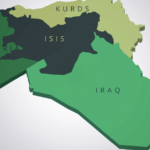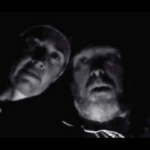Terrorism Offences: History, Motivations and Current Laws

American Philosopher Michael Walzer opined in 2002 that, “Terrorism is the deliberate killing of innocent people, at random, to spread fear through a whole population and force the hand of its political leaders.”
And while his opinion is not consistent with legal definitions of terrorism in developed nations, it does fairly describe the motives behind several terrorist attacks in recent decades – whether by religious fundamentalists, aggrieved victims of colonisation, foreign invasions and other forms of aggression and subjugation by Western nations, and domestic groups who believe their governments have unlawfully become instruments of oppression.
The definition of terrorism in Australia
Section 101.1 of the Criminal Code Act (1995) prescribes a maximum penalty of life imprisonment for anyone who commits a terrorist act.
‘Terrorist act’ is defined as:
An act which is done or threat that is made with the intention of advancing a political, religious or ideological cause; and
Done or made with the intention of:
- coercing, or influencing by intimidation, the government of the Commonwealth or a State, Territory or foreign country, or of part of a State, Territory or foreign country; or
- intimidating the public or a section of the public.
The act must:
- cause serious harm that is physical harm to a person; or
- cause serious malicious damage to property; or
- cause a person’s death; or
- endanger a person’s life, other than the life of the person taking the action; or
- create a serious risk to the health or safety of the public or a section of the public; or
- seriously interfere with, seriously disrupt, or destroy, an electronic system including, but not limited to:
- an information system; or
- a telecommunications system; or
- a financial system; or
- a system used for the delivery of essential government services; or
- a system used for, or by, an essential public utility; or
- a system used for, or by, a transport system.
Findings regarding a 40-year old act of terrorism in Australia
In December 2022, the mainstream media reported that the 1982 terrorist bombing of the Israeli Consulate and the Hakoah Club in Sydney were acts of international terrorism organised by the the Palestinian organisation labelled ‘15 May’; a group led by master bomb maker, Hussayn Al-Umari (aka Abu Ibrahim).
The NSW State coroner also found that one or more domiciled Australians assisted in the attacks.
The NSW Joint Counter Terrorism Team (JCTT), which is comprised of members from the Australian Federal Police (AFP), NSW Police Force, Australian Security Intelligence Organisation (ASIO) and the NSW Crime Commission (NSWCC), which established Strike Force Forbearance (SFB) over a decade ago to reinvestigate the incident, welcomed the coroner’s findings.
The initial investigative team was a veritable who’s who of global terrorism elite which in 2009 resulted in the U.S. Federal Bureau of Investigation (FBI) placing a US$5 million reward for information leading to the apprehension of the mastermind, Umari.
Appreciation for the identification of the perpetrators was expressed by the NSW Jewish Board of Deputies which is the representative organisation for the NSW Jewish community.
NSW counterterrorism and special tactics commander Mark Walton confirmed that not only have the perpetrators been identified, but also how the bombs were constructed and entered Australia.
Indeed, just prior to the NSW coroner sitting in the first week of December 2022, a reward of A$1 million dollars was announced by the Government. The hunt is on for the Australian residents who assisted in the facilitation of the bombings. This is a significant increase in the initial reward which was $100,000.
Coroner’s findings regarding motivation
The coroner Teresa O’Sullivan said this in her report.
“From June 1982, protest activity outside the Consulate intensified following the invasion of southern Lebanon by Israeli military forces (in June 1982), and especially following what has been referred to, historically, as the Sabra and Shatila massacre on 16 September 1982, carried out by Christian militia (and for which some persons regard Israel as bearing responsibility).”
It is reported that the massacre at the Sabra and Shatila camps caused between 450 and 3,500 deaths, mostly Palestinians and Lebanese Shiites.
Bomb-maker’s signature
One of the pieces of evidence which enabled the NSW coroner to make the findings that she did was that similar bombs were the cause of an explosion on Pan American Flight 830 with one passenger killed and 16 injured. The captain however was able to safely land the aircraft, saving 284 passengers. Similarly in 1982, another aircraft at Rio de Janeiro was fortunate that a cleaning crew located the bomb, which was safely removed.
Coroner’s advice to enforcement agencies
The NSW coroner has advised the commissioner to liaise with the Forensic and Analytical Science Service (FASS) to consider retesting of exhibits, having regard to enhancement of DNA technology etc. Approximately a decade prior when Israeli Prime Minister, Golda Meir was in New York, a bomb was discovered bearing the hallmarks of the two on the aircraft and that of the bombs which exploded at the Israeli consulate and the Hakoah Club, paving the way for the NSW coroner to find as she did. That the bombs were made by the same bomb-maker was evident.
But let’s now rewind, and take a look through historical acts which could constitute terrorism.
Ancient terrorism
Whilst Plato, Aristotle and Cicero spoke of the threat to the Greco-Roman world by tyranny (701 – 800 BC) and is supported by principal theologians such as Thomas of Aquinas who spoke of tyrannical oppression, there are other competing claims of how the word terrorism entered the world of vocabulary.
Another early reference was the Jewish rebellion against Rome in 70 AD however, as pointed out by ancient historian Professor Shawn Aster the Assyrians also lay claim to perhaps topping the list of where the term terrorism emanated from.
This is supported by the use of the word ‘melammu’ to define terrorism throughout Assyrian history, from 1100 BCE to 612 BCE.
However melammu, a word initially borrowed from the extinct East Semitic Akkadian language spoken in ancient Mesopotamia, was also used to describe divine radiance and splendour during other periods leading to the French claim as being the simplest to lean towards.
French historical terror – an overworked guillotine
The word terrorism was popularised when taken from the French term ‘regime de la terreur’ and was initially used to describe the French state’s terror on its own citizens who opposed its politics, namely those French citizens who stood against the French revolution.
This involved extreme violence including 17,000 beheadings by guillotine during France’s reign of terror from 1793 to 1794, although some historians estimate that the number of deaths during the reign of terror was between 30,000 and 50,000 which included 10,000 inmates who hadn’t yet faced trial or more precisely, the guillotine.
This involved new legislation such as the ‘Law of Suspects’ with mass executions organised by a twelve-man committee of public safety. How’s that for irony?
Not the kind of Xmas present expected
Christmas day 1793 alone saw in excess of 250 French citizens from children to aged persons, publicly beheaded with a king and queen facing the guillotine during the French revolution shortly thereafter. This was one of the first clearly reported cases of state terrorism.
Those in power executed in acts which could be classed as terrorism
Some of those in power who might be classified as terrorism victims under Michael Walzer’s definition could include:
- King Louis XV1 – Executed by guillotine 1793
- Queen Marie-Antoinette – Executed by guillotine 1793
- Russian Tsar Alexander 11 – Killed by suicide bomber 1881
- French President Marie Francois Sadi Carnot – Assassinated 1894
- Spanish Prime Minister Antonio Canovas del Castillo – Assassinated 1897
- Queen of Hungary Elisabeth Amalie Eugenie – Assassinated 1898
- United States President Wiliam McKinley – Assassinated 1901
- Italian Prime Minister Aldo Moro – Assassinated 1978
- Israeli Prime Minister Yitzhak Rabin – Assassinated 1995
- President of Haiti Jovenel Moise – Assassinated 2021
State terrorism throughout the world
This term as indicated, applies when a government commits acts of terrorism against its own citizens or involves one political faction against another.
One current example is what occurred in the storming of the U.S. Capitol Building on 6 January 2021 during the final days of the confirmation of the new U.S leader, President Biden.
This is further evident when we look back in history to what happened in Russia under the rule of Stalin and Germany under the rule of Hitler. History also confirms what occurred in the former Yugoslavia – Libya – Cambodia – Chad – Syria – Sudan – Myanmar and many other countries.
All leading to what John Brown who led the storming of a military fort in 1859 prior to the American Civil War said on determining why his action was necessary.
“To force the nation into a new political pattern by creating terror.”
Unlike the dictators of the countries mentioned above, John Brown was a good man who was an abolitionist of slavery but the way he went about it by committing terrorist acts led to his downfall.
No matter how absolutely right he was on the immorality of slavery, an act of terrorism in itself. He was executed after inciting a slave rebellion but John Brown knew what was coming even after the slaves were freed.
American terrorism– the Ku Klux Klan
It all seems such a long way from 1865 when after the American Civil War the Ku Klux Klan was formed to inflict terrorism not only on African Americans but also supporters of all races in the reconstruction of society after slavery. However, terrorism in relation to slavery was ever-present for those slaves and their families including those who opposed slavery.
Terrorism which shook the world
Some of the most horrendous acts of terrorism over the past 50 years are:
September 1972 – Munich Olympics
Black September terrorist group took 5 Israeli athletes and 6 coaches hostage with West German neo-Nazis providing logistical assistance which resulted in all the hostages including one police officer and 5 terrorists killed in during an attempt to rescue the hostages.
August 1980 – Bologna train station bombing
Two members of a splinter cell of the Italian right-wing terrorist group New Order bombed the Bologna train station killing 85 and injuring in excess of 200 passengers.
October 1980 – Oktoberfest bombing
The Munich Oktoberfest in Germany was bombed by at least one neo-Nazi killing 13 and injuring 2,011.
February 1994 – Cave of the Patriarchs Mosque Massacre
April 1995 – Oklahoma City bombing
Timothy James McVeigh was an American terrorist who murdered 168 people including 19 children in a bombing attack on a federal building in Oklahoma City Oklahoma and was executed by lethal injection on 11 June 2001 in Indiana. He was a supporter of the Branch Davidians which was an apocalyptic religious group.
September 2001 – World Trade Centre
An Al-Qaeda terrorist attack resulted in passenger airliners being flown into the World Trade Centre in Manhattan and the Pentagon in Virginia, headquarters of the United States Department of Defence. The attacks killed close to 3,000 people of all religions and races.
October 2002 – Bali Bombings
The Islamic fundamentalist group Jemaah Islamiya’s bombings of two night clubs in Bali – Paddy’s Pub and the Sari Club – resulted in the murders of 202 innocent people, including 88 Australians, and injuring a further 209.
July 2011 – Norwegian summer camp massacre
Anders Behring Breivik, a Norwegian self-declared Islamophobic was an acknowledged far right domestic terrorist who killed a total of 77 people, mostly young persons from a workers youth league summer camp. On the day of the attacks, he had emailed a manifesto declaring his opposition to Islam at the same time blaming feminism for a European cultural suicide. His manifesto called for the expulsion of all Muslims from Europe.
July 2014 – Malaysia Air 298
298 Malaysia airline passengers and crew on flight 17 were killed by a Russian-made surface-to- air missile by Russian-backed separatists.
November 2015 – Paris terror attacks
Attacks by Islamic fundamentalists by gunmen and suicide bombers at bars, restaurants, a concert hall and sports stadium in Paris resulted in the murder of 130 people and injuries to a further 416
May 2017 – Manchester bombing
23 young people died when an extremist suicide bomber detonated a bomb at an Ariane Grande concert at Manchester Arena, Manchester United Kingdom.
March 2019 – Christchurch massacre
A white supremacist Brenton Harrison Tarrant an Australian New South Welshman was charged with the murder of 51 Muslim worshippers including injuring a further 40 at the Al Noor and Linwood Mosques in Christchurch New Zealand. The attack was seen as a part of a global increase in white supremacy since 2015 by the intelligence community of many countries.
These several examples also resulted in approximately 10,000 people injured and are only a minority of the numerous acts of domestic and international terrorism perpetrated throughout the world on a regular basis.
And so it goes on, country after country with terrorist acts perpetrated against royalty, heads of countries, parents and children.
The changing face of terrorism
Daniel Koehler is the director of the German institute on radicalisation and de-radicalisation studies (GIRDS). He is also a Fellow at the George Washington university program on extremism at the centre for cyber and homeland security, meaning he is well qualified to discuss matters on both the U.S and Europe in relation to right wing extremism and terrorism. He makes the point that both Europe and the U.S. has seen a revival of militant right wing extremist groups including networks and incidents over many years. This revival indicates a surge of Islamophobia and anti-immigration and includes white supremacist and neo-Nazi groups.
The concerning thing is that as opposed to the wide media covered with any alleged international terrorist attacks, there has been little coverage on the domestic terrorist attacks despite many people having been murdered and injured by right wing and the like organisations.
The reason
Analysis between European and academic official statistics including the university of Bergen’s terrorism in Western Europe events data (TWEED) and Europol’s annual European union terrorism situation and trend report (TE-SAT) deliver the reason why. It is that right wing extremism does not get the media coverage necessary to highlight the regular increase of terrorist attacks by this cohort, as extreme right-wing attacks are not categorised as terrorism by Europol based on the national legal frameworks.
Further analyses also show that all available national and international statistics in Europe and North America indicate extreme right-wing terrorism has been increasing for several decades not just years. This has created a dangerous level of ignorance in relation to this form of militant right-wing extremism the world over.
The statistics of politics in extreme right wing & nationalist parties
Though difficult to quantify due to different criteria for what constitutes right wing extremism etc, there could be in excess of 40 countries with extreme right wing and national political parties with some not all that popular but others gaining significant momentum.
Another significant stand-alone statistic is that further studies indicate between 34% and 39% of lone wolf terrorists had an extreme right-wing background. These figures are close to what ASIO also say.
The threat of terrorism in Australia is ever present
Terrorism is a constant threat to Australia with the risk level about 18 months ago listed by the Australian national terrorism threat advisory system (ANTTAS) as ‘probable’ which signified that a terrorist attack was more than likely to occur.
The Australian government national security risk levels pertaining to terrorist attacks are Certain-Expected-Probable-Possible-Not Expected. Today, Australia’s level is ‘possible’.
This, the Australian Government says is because there is a reduced number of people here in Australia and overseas who are intent on causing Australia harm. The Australian government say that the threat which existed leading to an elevated risk level in 2014 is much less today, significantly as a result of the violent extremist religious groups no longer having the capabilities they once had. However, extreme right wing, nationalist white supremacists and neo-Nazi groups are continuing to increase.
Al-Qaeda and the Islamic State of Iraq including the Levant amongst many similar terrorism organisations offshore having been significantly degraded and in essence left leaderless, are no longer the threat they once were. Which, in turn, should have seen Australian domiciled extremists have less inclination to be motivated to act. Unfortunately this is not entirely accurate as the future would show.
The danger of terrorist attacks remain
The Australian Security Intelligence Organisation (ASIO) warns Australians to be ever vigilant as there are still many violent domestic nationalist and racist extremists consistently endeavouring to radicalise others with the potential for them to undertake terrorist attacks.
Covid-19 pandemic restrictions–the catalyst for terrorism
Whilst ASIO didn’t identify any actual acts of terrorism as a result of persistent violent rhetoric and specific violence as a result of the covid-19 situation, the security organisation says it is something to be ever conscious of. Though, as we saw many incidents of violence did occur and in some instances included hate crime which could be regarded as a form of domestic terrorism at the very least.
Extremist and extreme right-wing organisations look for any excuse to exploit others and the furore around the initial restrictions as a result of covid-19 was one such excuse although the easing of restrictions on the covid front saw this agitation abate somewhat, perhaps in terms of conventionally recognised terrorism.
ASIO however, warns that smaller groups and lone wolf terrorist attacks are all still possible and importantly are difficult to forecast. Somewhat opposed to ASIO’s view, Europol’s 2022 Terrorism Situation and Trend Report (TE-SAT) confirms that the Covid pandemic was significantly noticeable in shaping extremist narratives and will continue to do so into the future, perhaps particularly amongst younger people. However, agree that lone wolf perpetrators are the biggest threat dependent on who they are associated with, either right wing violent extremists or international terrorist groups in all member states of which Australia is one but particularly in the European union.
ASIO’s assessment on the covid situation has to be revisited
As outlined in our article 27 December 2022 titled Failure to Label the Wieambilla Far Right Killings as Terrorism as Unacceptable, it is clear that this was indeed a domestic terrorist attack. It is critical that our police forces and others refrain from watering down what is clearly a domestic terrorist event. With what may be an overseas adherent such as is also highlighted somewhat within the 2022 TE-SAT report, such so called lone-wolf actors have the propensity to have a wider context which Australians must be informed of. Particularly as there is evidence now emerging that some extreme right-wing groups have international connections with each other.
The Wieambilla terrorist attack has apparently now been accepted by Queensland police as having been motivated by the murderers subscribing to a Christian fundamentalist belief system known as premillennialism which is understood to be an aspect of the religious belief of some in relation to the second coming of Jesus Christ.
The global terrorism index (GTI)
The GTI is published annually by the institute for economics and peace (IEP) and is based on information from the global terrorism database (GTD) collated by the national consortium for the study of terrorism and responses to terrorism. It covers 163 countries.
Whilst the number of terrorist attacks increased as per the 2022 report, the number of deaths reduced indicating that terrorism attacks are less lethal though not by much. Deaths were reported as being down 1.2% with two thirds of countries having reported no fatalities from terrorism. These numbers though, fluctuate from statistic to statistic for a variety of reasons.
About half of those deaths were attributed to Al-Shabaab and the Taliban amongst others, with the Sahel region which covers parts of 10 African countries having become the epi centre of terrorism. However, it is not quite clear cut what terrorism is perpetrated by whom as criminal organisations are passing themselves off as Islamic state insurgents.
Improvements in GTI rankings
86 countries improved their GTI ranking. Australia is listed at number 60 which indicates low impact according to terrorist activity. This index comprises 163 of the world’s 195 sovereign countries according to terrorist activities. If we add Vatican City and Palestine, the total number would be 165 though there appears to be no absolute universal agreement on these figures.
The world fights back
The United Nations Office of Counter-terrorism (UNOCT) succeeded in organising a consensus by all United Nation members on a common counter-terrorism strategy with its 193 member countries committed to the peace and security of the world.
The independent and collective strategy of the United Nations (UN), North Atlantic Treaty Organisation (NATO) and all other global organisations including the European Union is what is known as the ‘4Ps’ (Prevent – Pursue – Protect – Prepare). There exists in many counter-terrorism circles what it is suggested is another part of this strategy called ‘Respond’.
The United Nations Security Council’s dedicated Counter-Terrorism Committee has oversight of addressing the implementation of all matters required to prevent terrorism. Further, the Council’s Executive Directorate assesses and assists each country in specific techniques to counter terrorism thereby in some instances lessening the instances of terrorist activity.
This includes technical assistance involving governments, civil society and internet providers to lessen the ability for international terrorist organisations to utilise online platforms for recruitment and the coordination of acts of terrorism.
Why the world must be vigilant
We have seen the abject devastation caused by the weapons used by terrorists (both domestic & international), from commercial airliners – tanks – surface-to-air missiles – chemical weapons – bombs – firearms – knives – machetes and swords. The greatest fear of governments however is that of home grown or otherwise terrorists potentially having access to nuclear material. Such is the concern of governments far and wide is that of a nuclear bomb in the hands of any terrorist group, for it is unequivocally accepted that terrorists would use it.
According to strong anecdotal debate within the intelligence communities of many nations, there exists one of the most critical and lengthiest ongoing undercover operations in history in a collaborative global effort to eliminate any such risk to society.
Recent deaths as a result of terrorism
The 5 years from 2016 to 2020, has seen approximately 26,000 people, on average, killed by terrorist means every year. This years GTI has just been released and covers last year where deaths as a result of terrorist acts were down from 2021 by 9% to 6,701. Another improvement was that terrorist attacks were also down from 5,463 in 2021 to 3,955 in 2022.
Legalities involved in terrorism charges
You don’t have to commit a terrorist act to be sent to prison for many years. If you provide money to someone who is found to have made preparations or plans to commit a terrorist act, you may leave yourself vulnerable to be charged with financing a terrorist or terrorism in other ways. Even if the terrorist act is not carried out.
You may also be charged and possibly convicted, for example, if you were reckless by researching or making material capable of leading to the commission of a terrorist act. Again, this is the case even if no act ultimately takes place. Another way you may find yourself facing a charge relating to terrorism is if you hold onto any sort of material for someone including documents etc. which could assist the commission of an act of terrorism.
Therefore, should you find yourself the subject of questioning by police in relation to any form of terrorism, the wise thing to do is to contact a lawyer as soon as possible.
For a fully comprehensive outline of matters associated with the legal technicalities of terrorism including which groups are listed by Australia as terrorist organisations, peruse the article of 16 January 2023 by SCL Principal.
Know your state’s preparedness to respond and prevent terrorism
New South Wales has a Cabinet Standing Committee on Counter Terrorism headed by the Premier which in conjunction with the Counter Terrorism Chief Executives Coordinating Group, led by the Director General of the Department of Premier and Cabinet will strategize the next moves of all other departments including the military and police.
Suspicious activity call National Security Hotline on 1800 123 400
Life threatening call 000
Receive all of our articles weekly
Related Articles
RELATED LEGISLATION
- Section 101.2 Criminal Code Act 1995 | Providing or Receiving Training for Terrorist Acts
- Section 101.4 Criminal Code Act 1995 | Possessing Things Connected with Terrorist Acts
- Section 101.5 Criminal Code Act 1995 | Collecting or Making Documents Likely to Facilitate Terrorist Acts
- Section 101.6 Criminal Code Act 1995 | Planning or Preparing Terrorist Acts
- Section 102.2 Criminal Code Act 1995 | Directing the Activities of a Terrorist Organisation
- Section 102.3 Criminal Code Act 1995 | Membership of Terrorist Organisation
- Section 102.4 Criminal Code Act 1995 | Recruiting for a Terrorist Organisation
- Section 102.5 Criminal Code Act 1995 | Training Terrorist Organisation
- Section 102.6 Criminal Code Act 1995 | Funding Terrorist Organisation
- Section 102.7 Criminal Code Act 1995 | Providing Support to Terrorist Organisation
- Section 102.8 Criminal Code Act 1995 | Associating with Terrorist Organisations
- Section 103.1 Criminal Code Act 1995 | Financing Terrorism
- Section 103.2 Criminal Code Act 1995 | Financing a Terrorist







